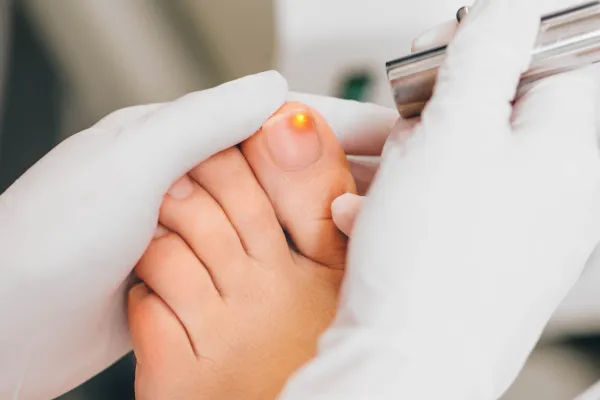Tips & Advice From Foot & Ankle Associates of Southern NH

How to Differentiate Between Fungal Nails and Other Nail Disorders
Nail issues can be more than just a cosmetic concern; they often signal underlying health problems. When dealing with nail discomfort or changes, it's essential to distinguish between fungal nail infections and other nail disorders such as psoriasis or trauma. Understanding the differences can lead to more effective treatment and better overall outcomes. At Foot and Ankle Associates of Southern NH, we’re here to help you recognize and address these conditions.
Recognizing Fungal Nail Infections
Fungal nail infections, or onychomycosis, are caused by fungi that invade the nail bed and surrounding tissues. Here’s how you can identify a fungal infection:
Color Changes: Infected nails often turn yellow, brown, or white. The color change usually starts at the tip and spreads towards the base.
Thickening: A fungal infection often causes the nail to become thicker and more brittle.
Texture Changes: The nail may become crumbly or rough. You might notice a chalky or powdery residue.
Distorted Shape: The nail may become misshapen or deformed, losing its smooth appearance.
Separation: In advanced cases, the nail can lift away from the nail bed, a condition known as onycholysis.
Differentiating from Other Nail Disorders
To effectively differentiate between fungal infections and other conditions, consider the following:
Nail Psoriasis
Nail psoriasis is a common condition where the immune system causes inflammation in the nails. It can be confused with fungal infections but has some distinct characteristics:
Pitting: Psoriasis often causes small, depressions or "pits" on the surface of the nails. These are not typically seen in fungal infections.
Oil Drops: Yellow or brown spots under the nail (oil drop appearance) are indicative of psoriasis.
Nail Separation: Psoriasis may also cause the nail to separate from the nail bed, but this is usually accompanied by other signs like pitting or ridges.
Nail Ridges: Horizontal or vertical ridges can appear on the nails, which is less common with fungal infections.
Trauma
Nail trauma can result from injuries, such as stubbing your toe or repeated pressure from tight shoes. Here’s how to differentiate trauma-related issues:
Discoloration: Trauma usually causes a dark spot or bruise under the nail (subungual hematoma) rather than a generalized color change.
Pain and Swelling: Trauma typically causes localized pain and swelling, which is usually absent with fungal infections.
Nail Splitting: In cases of trauma, the nail might split or crack due to the injury, which is different from the thickening and crumbling seen in fungal infections.
Other Nail Conditions
There are other less common conditions that may mimic fungal infections:
Eczema: Nail eczema can cause thickening and discoloration, but it often affects the surrounding skin as well. The presence of eczema elsewhere on the body can be a clue.
Lichen Planus: This condition can cause a range of changes in the nails, including color changes and ridges, but is usually accompanied by skin lesions.
Diagnostic Steps
To accurately diagnose and differentiate between these conditions, consider the following steps:
Clinical Examination: A thorough examination by a podiatrist can provide valuable clues based on nail appearance and symptoms.
Nail Cultures: A sample of the nail can be taken and cultured to identify the presence of fungi.
Biopsy: In some cases, a nail biopsy might be necessary to determine if the issue is psoriasis or another condition.
Medical History: Providing detailed information about any recent injuries, existing skin conditions, or family history can assist in accurate diagnosis.
Conclusion
Properly distinguishing between fungal nail infections and other nail disorders is crucial for effective treatment. If you're experiencing symptoms such as discoloration, thickening, or changes in your nails, it’s essential to consult with a podiatrist to get an accurate diagnosis and appropriate care. At Foot and Ankle Associates of Southern NH, we offer comprehensive evaluations and personalized treatment plans to address your nail concerns. Schedule a consultation today to get expert advice and relief from your nail issues!
Ask Foot & Ankle Associates of Southern NH And Their Team
Fill in the form to request a call from our team. One of our team members will call you for FREE and answer any questions or concerns you may have about your condition
Where To Find Foot & Ankle Associates of Southern NH

If you have any questions before scheduling an appointment or for general inquiries, please use the contact us button below. Our team will promptly reach out to assist you.
Opening Hours
Monday: 8:00am – 5:00pm
Tuesday: 8:00am – 5:00pm
Wednesday: 8:00am – 2:00pm
Thursday: 8:00am – 5:00pm
Friday: 8:00am – 2:00pm
Saturday: Closed
Sunday: Closed

